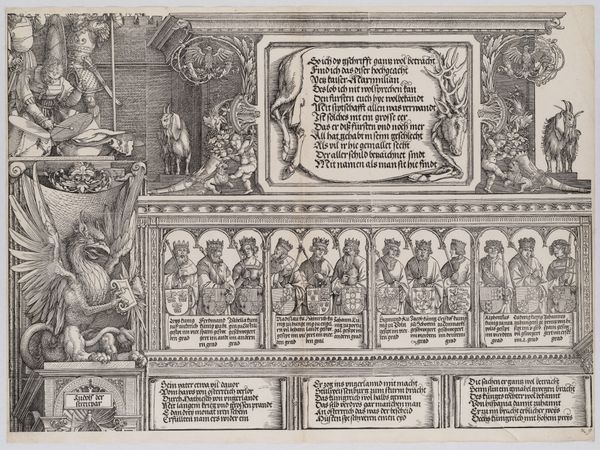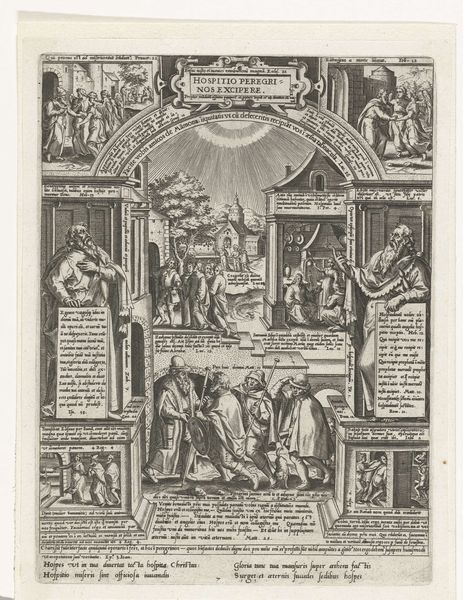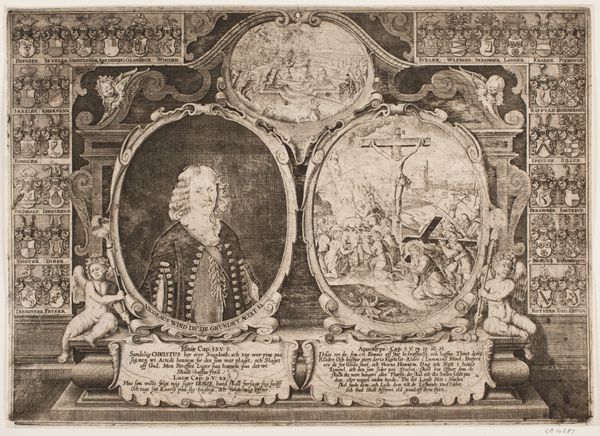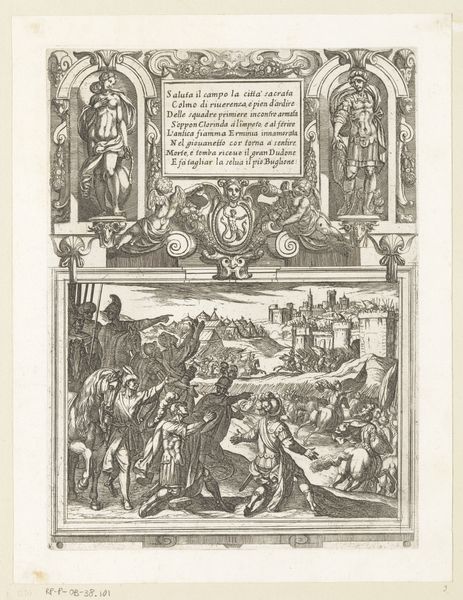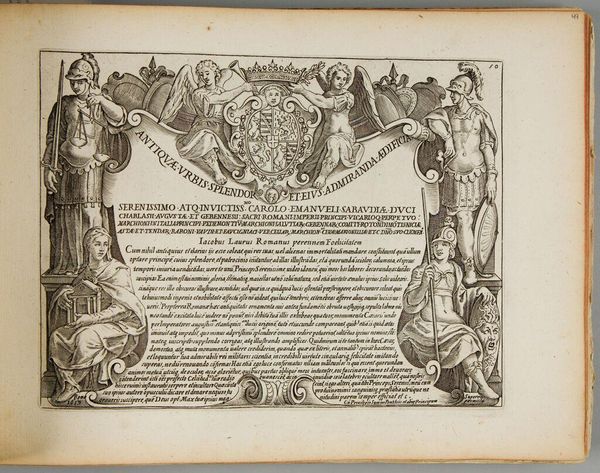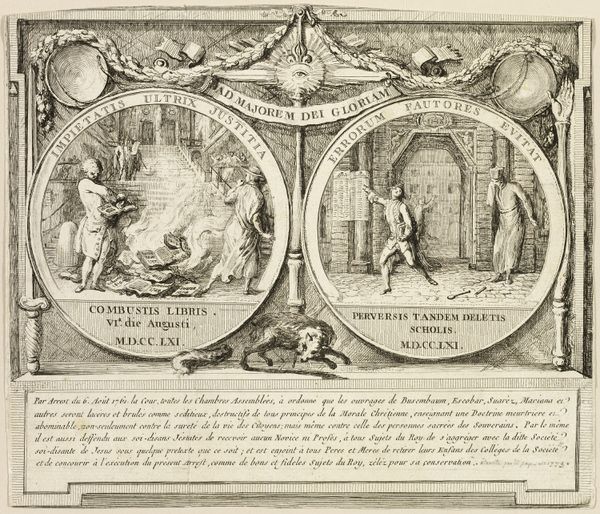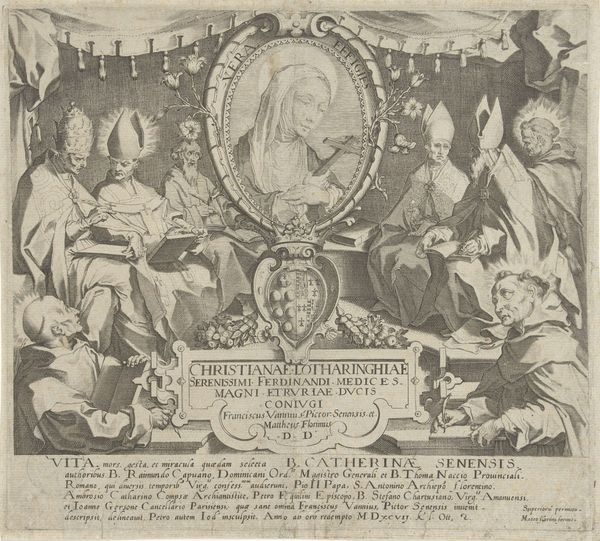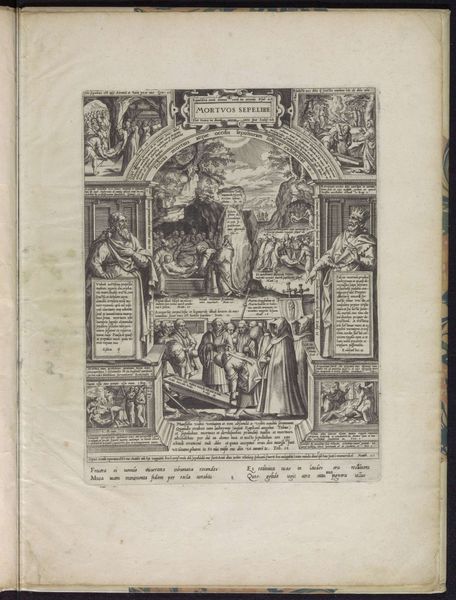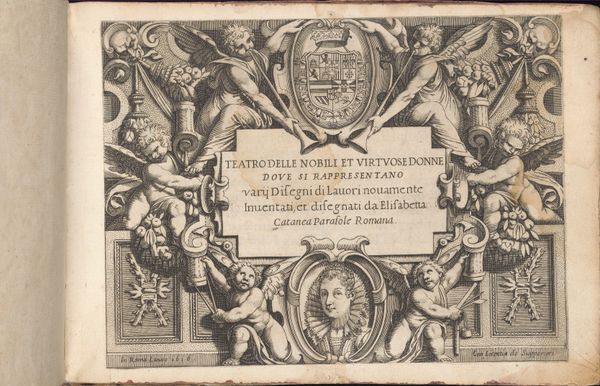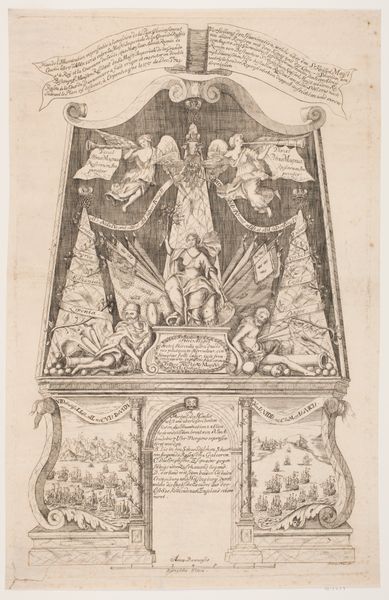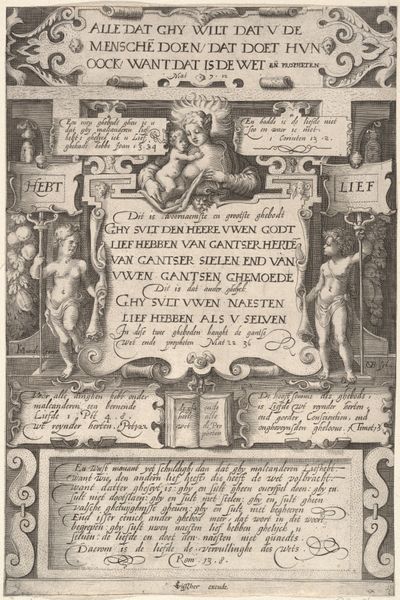
drawing, print, paper, ink, engraving
#
drawing
#
allegory
#
pen drawing
# print
#
figuration
#
paper
#
11_renaissance
#
ink
#
geometric
#
history-painting
#
northern-renaissance
#
engraving
Dimensions: height 321 mm, width 474 mm
Copyright: Rijks Museum: Open Domain
Curator: Welcome. We’re looking at a fascinating piece here, titled "Stamboom van het Habsburgse huis, blad één," or "Family Tree of the House of Habsburg, Sheet One," created between 1533 and 1535. It’s a drawing and print that incorporates both ink and engraving on paper. Editor: Wow. It's like looking at a medieval illuminated manuscript—but edgier, you know? All this text interwoven with stern figures… It gives off this intense vibe of power, of destiny. Like, history etched in ink. Curator: Indeed. What you're sensing is deeply tied to the purpose of such images. Genealogical trees were often commissioned by powerful families, such as the Habsburgs, to legitimize their rule, connecting themselves to illustrious ancestors and reinforcing their claim to authority. Think of it as the ultimate PR exercise, but in the Renaissance! Editor: A very convincing one, at that! The intricacy is dazzling; look at the lettering and those heraldic symbols nestled within these quasi-architectural columns. I wonder about the person who crafted it. Did they even realize the immense political weight they were contributing to? It's sobering. Curator: I think artists in those days were very aware of the function their works played. Visual imagery was an incredibly important tool, both in culture and in governance. This print would have circulated amongst elite circles, shaping perceptions and reinforcing dynastic power. It also borrows heavily from allegorical tropes typical of Renaissance printmaking. Editor: Hmm. Almost makes you want to subvert it somehow! Like spray-paint a smiley face on that grumpy Habsburg face in the middle there. But in all seriousness, seeing these family trees really does make you consider the manufactured nature of power. How reliant on image and narrative it is! Curator: That’s a crucial point. This piece is so telling in regard to image fabrication of sovereign power in sixteenth-century Europe. Editor: Well, I'm leaving with a far deeper understanding, and perhaps a healthy dose of skepticism, regarding ancestral power! Curator: Precisely. Art can be such an intriguing portal into the complex social and political machinery of any given era!
Comments
No comments
Be the first to comment and join the conversation on the ultimate creative platform.

